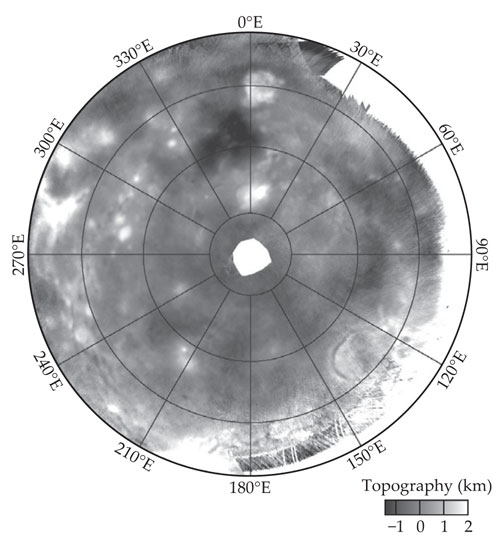A day on Venus just got longer
DOI: 10.1063/PT.3.1510
A day on Venus just got longer. For two years in the early 1990s, the Magellan spacecraft bounced radar waves off the surface of Venus. Echo return times gave surface topo-graphy, and tracking the radar images yielded a planetary rotation period of 243.0185 Earth days. Our nearest-neighbor planet was visited again in 2006, this time by the European Space Agency’s Venus Express. The new mission also created a topographic map, but did so by measuring thermal radiation emitted from the surface. Because the Venusian atmosphere is so thick with greenhouse gases, temperature fluctuations in its lower regions are minimal and temperature serves as an indicator of altitude. When Nils Mueller (German Aerospace Center) and colleagues compared their map (see the figure) with Magellan’s, they were surprised to see a subtle longitudinal offset. Subsequent analysis revealed that in order to align the maps, the rotation period of Venus must be 6.5 minutes longer than determined by Magellan—at least when averaged over the 16 years separating the Express and Magellan observations. The new result actually agrees with Earth-based radar measurements made before Magellan, and Mueller and colleagues note that the Magellan data were obtained over a relatively short time. They suggest that Magellan might have measured an anomalous rotation rate. It’s not implausible that Venus could be temporarily torqued; interactions with its atmosphere, the Sun, or Earth could each do the job. (N. T. Mueller et al., Icarus 217, 474, 2012.)


